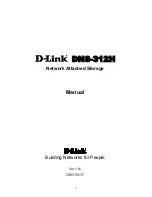
SC35 User Guide Ver 4.8
August 30, 2002
Page 8 of 25
3.3.3 Request Sense Command – 03h
Request Sense CDB
The REQUEST SENSE command requests that the SC35 transfer sense data to
the initiator. If the SC35 has no sense data available to return, it will return a
sense key of NO SENSE and an additional sense code of NO ADDITIONAL
SENSE INFORMATION. The sense data shall be preserved by the target for the
initiator until retrieved by a REQUEST SENSE command or until the receipt of
any other I/O process for the same I_T_x nexus. Sense data shall be cleared
upon receipt of any subsequent I/O process (including REQUEST SENSE) to
the same I_T_x nexus.
The target shall return CHECK CONDITION status for a REQUEST SENSE
command only to report exception conditions specific to the command itself. For
example:
a) A non-zero reserved bit is detected in the command descriptor
block;
b) An unrecovered parity error is detected on the data bus;
c) A target malfunction prevents return of the sense data.
If a recovered error occurs during the execution of the REQUEST SENSE
command, the target shall return the sense data with GOOD status. If a target
returns CHECK CONDITION status for a REQUEST SENSE command, the
sense data may be invalid.
The SC35 is capable of returning eighteen bytes of data in response to a
REQUEST SENSE command. If the allocation length is eighteen or greater, and
the SC35 returns less than eighteen bytes of data, the initiator should assume
that the bytes not transferred would have been zeros had the target returned
those bytes. Initiators can determine how much sense data was returned by
examining the allocation length parameter in the command descriptor block and
the additional sense length in the sense data.
The sense data format for error codes 70h (current errors) and 71h (deferred
errors) are defined below. For further details on the Request Sense command,
please refer to the SCSI specification.









































